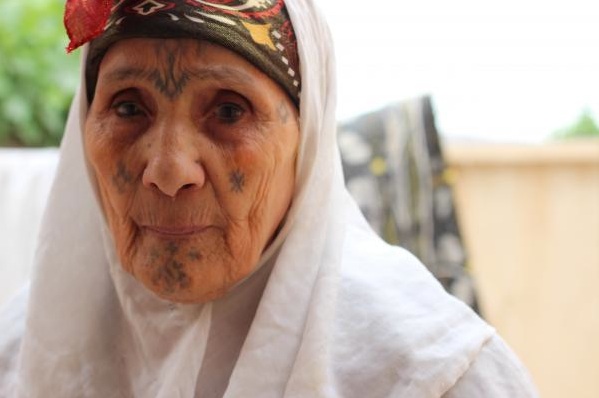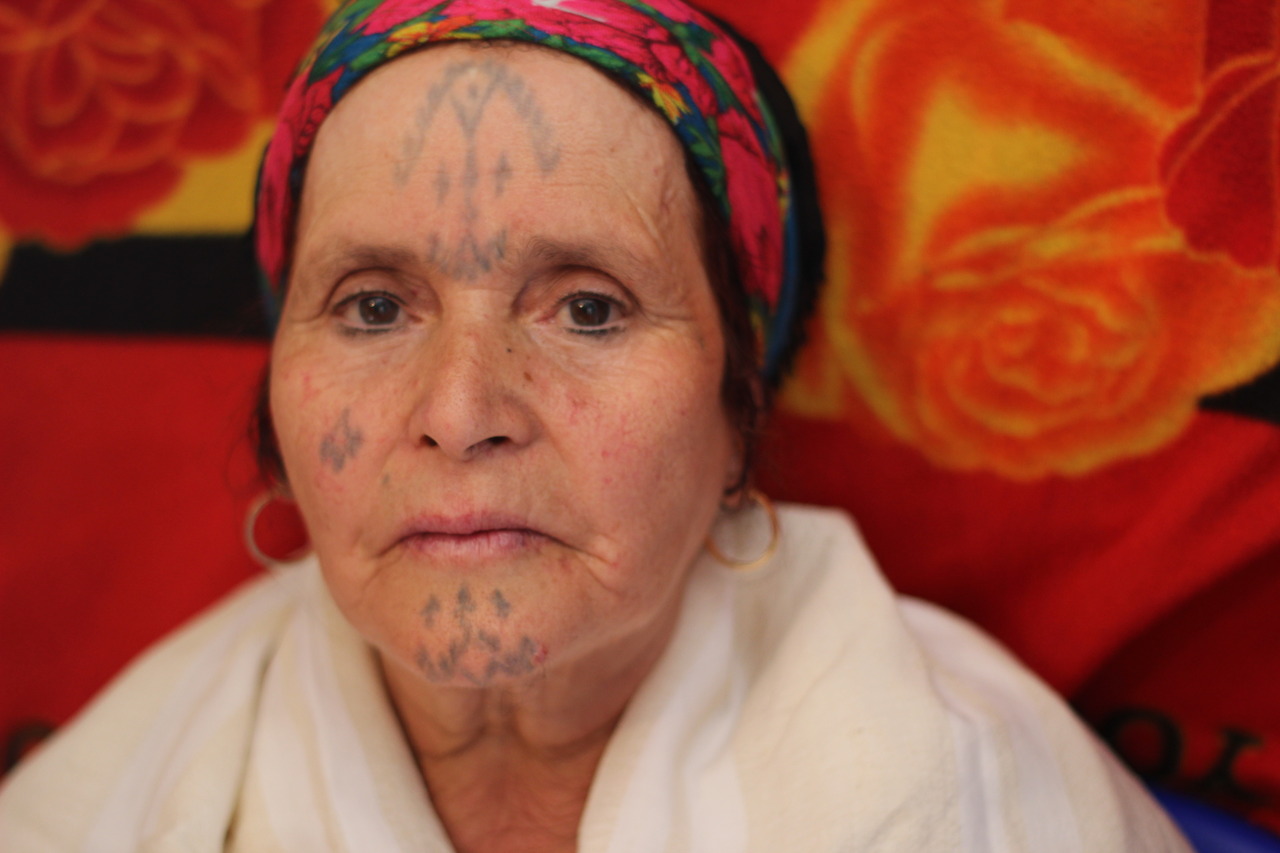
The Pulitzer Center student fellowship program offers undergraduate and graduate students at Campus Consortium member schools the opportunity to pursue an international reporting project and receive professional support from Pulitzer Center editors and journalists.
Wake Forest University's Yasmin Bendaas traveled to Algeria in summer 2012 as a Pulitzer Center student fellow. Bendaas became intrigued by her grandmother's facial tattoos and wanted to research this symbol of cultural identity in the Aures Mountains in northeastern Algeria.
In a written interview with the Pulitzer Center, Bendaas offers an inside look into the ambitious project she undertook as a rising senior and its personal connection to her family history. Excerpts from the interview follow.
Pulitzer Center (PC): How has your background impacted your desire to tell stories?
Yasmin Bendaas (YB): Growing up in the same place may not seem extremely conducive to storytelling, but with foreign-born parents, I did get to do a lot of traveling. I remember discussions upon the return to school by classmates about summer camps, which I had never been to, and the look on teachers' faces after I told them I'd just come back from Iran or Algeria.
All of my trips revolved around my family, so despite the traveling, the realm of tourist is somewhat unfamiliar to me. Still, stays have been few and far between, and I've bonded with my family through stories. I've been able to experience and get a sense of their lives, but they've never been able to experience mine. Explaining little bits of my life, whether it be telling about my friends, or professors, or job, has given my family a much needed understanding of my day-to-day.
PC: How did the Pulitzer Center's mission of highlighting untold stories align with your reporting project?
YB: As I began my research last December, I found texts regarding the subject hard to come by, dated, and in French. I knew then, that I had a great chance to examine a topic that hadn't been a big research point recently as well as to open the window of understanding regarding the tattooing tradition to English speakers.
PC: What aspect of the fellowship was most valuable to you?
YB: The most valuable part of the fellowship was definitely not the material sources I had access to with funding, but the people I was able to work with at the Pulitzer Center. I worked most closely with Kem Sawyer, who edited my written pieces, and Nathalie Applewhite, who helped me with all things technical and with my video piece. I truly looked forward to sending on my next pieces to them and getting their feedback. It was a joy to work with people like that, and I actually miss it now that the project is completed.
PC: What was it like working in the field?
YB: Finding women that were willing to talk to me at first was challenging, but as I completed more and more interviews and had photos and samples to show my upcoming interviewees, things just started coming together in a kind of magical way.
I think the work itself was challenging – yes – but it was one of the parts of being in the field that was actually easiest. I knew how to do interviews, and I knew how to write stories. My work was also something I was genuinely curious about and devoted to. I absolutely adored the women I was interviewing and hearing what they had to say about a tradition that they carried on their bodies.
PC: You participated in a panel discussion with journalist Stephen Sapienza at Wake Forest. What was it like to talk about your reporting with the community?
YB: This project is something that is a part of my every day and has been for a very long time, so it became somewhat natural to share it and talk about my work. It also felt extremely purposeful to share facets of the untold stories with my own university community.
PC: Your reporting also generated a lot of buzz on social media. How did it feel to see your project recognized by the public?
It was a little bit shocking and unexpected. I couldn't believe when I saw things like Tweets about my work, reblogging of the portrait series on Tumblr, or the pinning of photos to Pinterest. I am grateful for it all because I was watching what were once untold stories being shared and retold again. It was the purpose of my work, and it was the goal of the Pulitzer Center fellowship.
PC: What did you learn about yourself as a result of this project?
YB: I fell in love with my research and with story-writing while I was in Algeria. Leaving Algeria even after two months was so different this time than my previous three visits to the country. I became close to people outside of my family for the first time and really felt a part of a community.
I think a lot of it does have to do with the fact that as much as I learned about the Chaouia tattooing tradition, I also learned so much about myself. The process of writing had a big role in self-reflection, tracking my thoughts, and understanding what I was absorbing. Putting it into words forced me to acknowledge these kinds of small milestones, the new pieces of information, and what it takes to get a story.
I was learning so much about myself that I never would have in a familiar setting. Your limits get pushed in a different way in international reporting. I'm reminded of what a teacher told my class before we graduated high school: Just remember who you are.
It hit me that you can't remember who you are…. if you don't know who you are, and it's this kind of work that has a miraculous way of teaching you.
Bendaas was selected to receive a Region 2 Mark of Excellence Award from the Society of Professional Journalists in the Feature Photography category for "Behind Algeria's Tattoos: A Portrait Series."
Wake Forest University is a member of the Pulitzer Center's Campus Consortium network.


